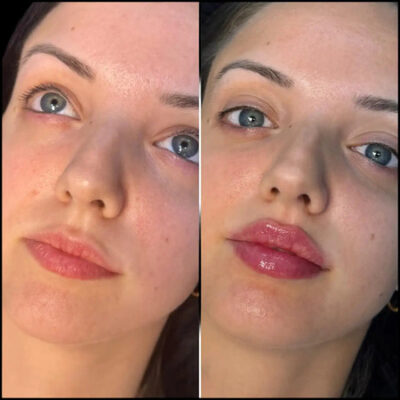A casual football match, a trip at home, or an unexpected collision, these are the moments that often lead to tooth loss. When a tooth is completely dislodged, a condition called tooth avulsion. it’s natural to feel overwhelmed. However, the crucial factor is how you respond in the following minutes. Taking quick, appropriate action can be the key to preserving the tooth and avoiding irreversible tooth loss. This guide provides you with a practical, fast-response plan to manage tooth loss emergencies effectively and minimise long-term damage.
What Qualifies as a Tooth Loss Emergency?
A tooth loss emergency occurs when a tooth is completely ejected from its socket. This isn’t the same as a chipped or cracked tooth, this is a full avulsion, and it demands immediate attention. While anyone can experience it, some people are more at risk:
- Children during active play
- Athletes in contact sports
- Cyclists and runners
- Individuals involved in unexpected accidents
Understanding this distinction is essential. The sooner you act, the better the chances of a successful outcome, potentially avoiding the need for a dental implant Sudbury professionals might later recommend.
The Critical First 60 Seconds
The initial 60 seconds after losing a tooth are absolutely vital. Stay calm and begin the rescue process quickly and gently.
Tooth Rescue Checklist What to Do Immediately
- Find the tooth: Check the area where the incident occurred and locate the tooth.
- Pick it up carefully: Always handle the tooth by the crown (the part that’s visible in the mouth). Avoid touching the root.
- Rinse it gently: If the tooth is dirty, rinse it for no more than 10 seconds with cold water. Avoid scrubbing the tooth or applying soap or any chemical solutions.
- Try to reinsert the tooth: If the person is conscious and calm, gently place the tooth back into its socket and ask them to bite down softly on gauze or cloth.
- If reinsertion isn’t possible: Store the tooth properly and seek professional help immediately.
How to Store a Knocked-Out Tooth
If reinserting the tooth isn’t possible, it’s essential to keep it moist to protect the fragile periodontal ligament cells on the root surface.
| Storage Option | Why It’s Effective |
| Cold milk | Maintains ideal pH and osmolality |
| Saline solution | Keeps root cells viable temporarily |
| Inside the cheek | Suitable for older children/adults; natural moisture |
| Tooth preservation kit | Optimal if available; designed for dental emergencies |
Avoid:
- Tap water causes cell damage
- Tissue or napkins causes the tooth to dry out
- Mouthwash or disinfectants too harsh for the root surface

Image Source – Private Dentist Sudbury
What Not to Do in a Dental Emergency
Even with good intentions, the wrong move can decrease the tooth’s chance of survival. Avoid these common mistakes:
- Don’t scrub the tooth or use soap/disinfectants
- Don’t let the tooth dry out
- Don’t delay dental treatment
- Don’t store the tooth in tap water or alcohol
Handling a knocked-out tooth properly preserves its structure and improves the odds of a dentist reattaching it successfully.
When and Why to Call a Dentist
Once the initial first aid is complete, contact an emergency dentist in Sudbury without delay. Timing is crucial, and getting professional care within 30 to 60 minutes significantly boosts the chances of successfully saving the tooth.
Your Dentist Will:
- Examine the socket and surrounding gum tissue
- Clean and reinsert the tooth if it’s not already in place
- Use a splint to secure the tooth to adjacent teeth
- Prescribe antibiotics if there’s a risk of infection
- Administer a tetanus booster if the injury involved dirt or rust
- Schedule follow-ups to monitor the healing process
If reimplantation isn’t possible, your dentist may explore alternatives like a dental implant Sudbury patients often choose for long-term restoration.
Long-Term Care After Reimplantation
Successfully placing the tooth back in its socket is just the beginning. The real healing takes place over the following weeks and months, requiring diligent aftercare and monitoring.
Follow-Up Steps Include:
- X-rays to check bone integration and alignment
- Root canal therapy (especially in adults)
- Avoiding hard foods for a few weeks
- Using a soft-bristled toothbrush to maintain hygiene
- Wearing a mouthguard for protection during physical activities
Even after the tooth appears stable, regular dental check-ups are essential to monitor for complications such as infection or resorption.
Preventing Future Tooth Loss Emergencies
While not all accidents can be prevented, certain precautions help minimise risk, especially in children and active individuals.
Prevention Tips:
- Wear a custom mouthguard during any contact sport
- Child-proof your home, secure sharp-edged furniture and staircases
- Educate children and teens about protecting their teeth
A little preparation and mindfulness can go a long way in lowering the chances of experiencing traumatic tooth loss.
Essential Items for a Dental Emergency Kit
Although accidents can’t always be prevented, having a plan in place can greatly impact the outcome.Having a small dental emergency kit on hand allows for quick action when it’s needed most.
What to Include:
- A clean, leak-proof container
- Bottle of cold milk or saline solution
- Disposable gloves
- Gauze pads
- Dental mirror and flashlight
- List of contact numbers for your emergency dentist in Sudbury
Store the kit in your car, gym bag, or sports locker, wherever incidents are more likely to occur.

Why Every Second Counts
Dental professionals agree that timing is the number one factor in a tooth’s chance of survival. If treated within 30 minutes, there’s a very high success rate. After an hour, the risk of permanent loss climbs steeply.
| Elapsed Time Since Injury | Chance of Successful Reimplantation |
| Within 30 minutes | Very high |
| 30–60 minutes | Moderate to high |
| Over 1 hour | Low |
This is why knowing your nearest provider and acting immediately is so critical.
Conclusion
Tooth loss emergencies can happen without warning, but with the right knowledge and a fast response, you can greatly improve the outcome. Acting calmly, storing the tooth properly, and seeking immediate dental care gives you the best chance at saving your natural smile.If your tooth cannot be saved, modern solutions like dental implant at Sudbury treatments can restore your appearance and function with outstanding results. In either case, prompt action is the golden rule. For those in Sudbury, professional dental support, whether urgent or ongoing, is always close at hand. Stay prepared, act quickly, and protect your smile for life.


